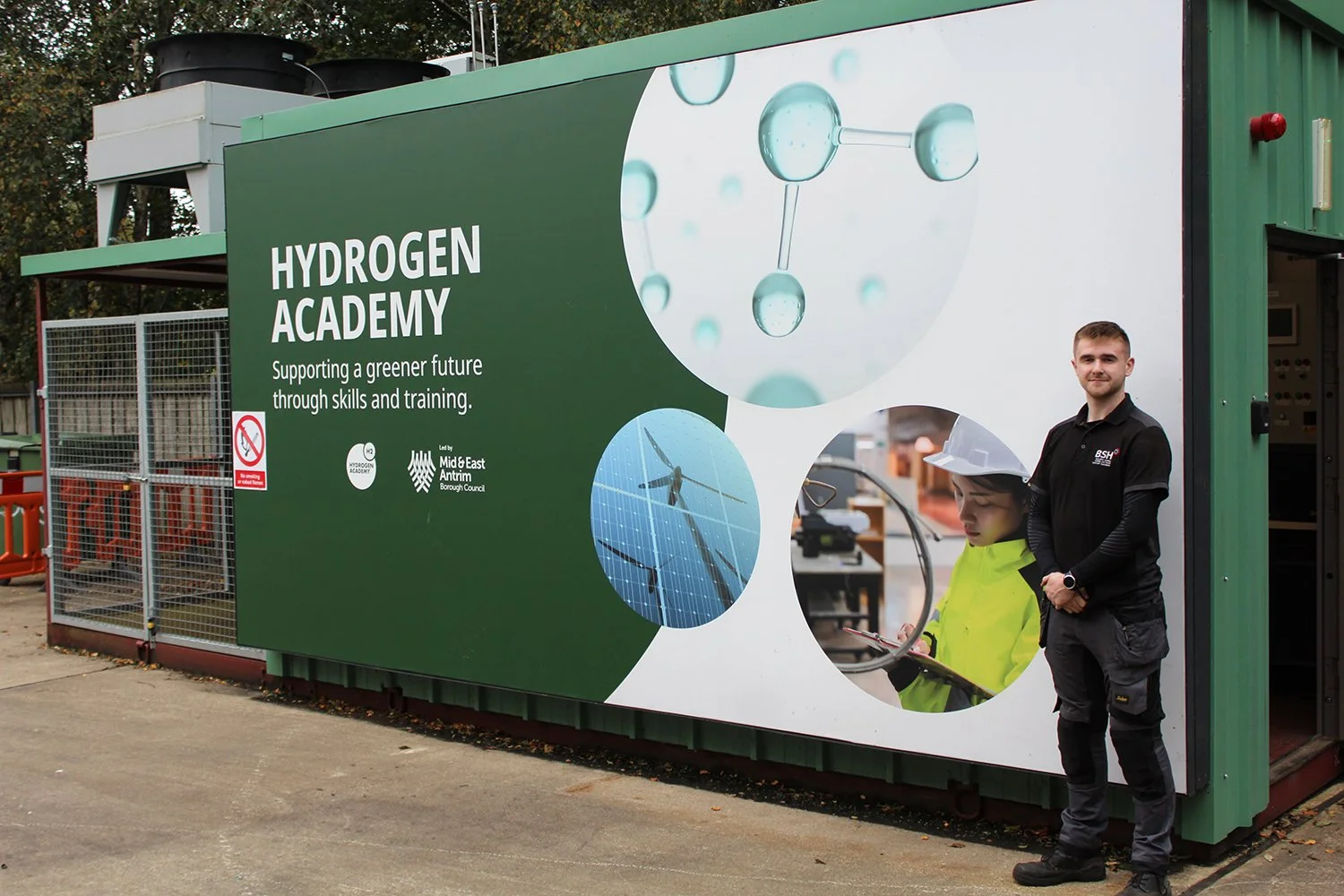THE PENTA
Hydrogen to power (H2P) and hydrogen to CHP H2P
-
Fuel cell combined heat and power (FCCHP)
These units are intended for large commercial customers which have a constant demand for heating, chilling and electrical power. In most cases a bespoke solution can be offered to move the conventional mechanical and electrical systems onto zero emission technology by using our FCCHP units.
-
Fuel cell hydrogen to power (FCH2P)
Focused on grid scale power, these units include a hybrid system we aim to have positioned on renewable sites across the UK. Starting at 2Mw electrical power and upwards to large Gw scale, the FCH2P units will be delivered in a pre-package solution from our factory for plug and play use.
-
Hydrogen to power steam (H2PS)
Also focused on grid scale power, these H2PS systems utilise a bespoke steam system which produces steam within seconds of switching on. Feeding into an asynchronous generator, the units replace the Penta fuel cell and can achieve fast reactive power to grid scale. The key advantage of asynchronous generation is its ability to prevent dropouts, as experienced with the Iberian grid failure in 2025, and its familiarity in engineering technology used.
How the Penta can be used
-
Electrical power, Heating and cooling
The Penta is first and foremost a zero-emission electrical generator. A byproduct of the generator is heat in two forms, high grade and low grade. The Penta would normally be used in large houses, commercial buildings and industry.
High grade heat maybe used for older commercial properties for potable water, radiators, fan coils, air handling systems, sprays bake ovens etc
Low grade heat may be used in modern buildings for underfloor heating, swimming pools preheat of potable water.
Chilling can be provided by use of the high-grade heat and using an absorption chiller to turn hot water into cold water efficiently without emissions.
If your company can access hydrogen and is looking for a clean zero emission power source, the Penta is the only unit capable of Tri-generation. Other traditional suppliers of Fuel cell systems can give you low grade heat, but these will not be legally capable of achieving temperatures in hot water compliant with the Legionella regulations.
-
Fuel cell grid use
The Penta can be used for self-power generation on the national grid or at time of emergency and mains power failure.
At presently a combination of power generation is used on the grid for electric. This includes wind, solar PV, tidal, gas turbine, coal and nuclear. Primarily we concentrate on the renewables - wind solar and tidal - as zero emission generators. Nuclear falls into its own category as although clean it has major after effects for the generations come.
The national electric model currently uses renewables as far a light, wind and tidal can provide but at night we lose solar, and at times wind. When this occurs backup grid batteries are used but these only last 100hrs before being empty and at that stage there is a switch to gas turbines which is a fossil fuel. This is where FC H2P steps in, the hydrogen to power station can generate electric to the grid for as long as we provide it with hydrogen fuel all zero emission. Watch the video to see how our Penta can reduce our electricity bills nationally and provide an endless supply of zero emission power.
In data centres, we can offer a solution where if the national grid becomes stressed, it can instruct the data centre to self-generate and turn onto fuel cells for power. This is called load shedding and allows the grid by agreement to switch off the data centre, (or for that matter any large consumer) to help the grid in times of emergency. The Penta can operate as a UPS online, offline or on standby mode. If Heathrow airport had an online Penta system in March 2025, it would not have lost power and the airport would not have closed causing billons of pounds of losses for the insurers and distruption felt across the world.

Ready to step into the future?
From traditional energy sources to zero emission energies, we can help you take your business into the future.


